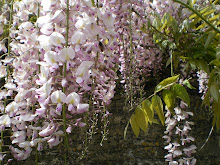- By Subject Matter
- Fashion

(Source: fashion-plate.blogspot.com 2009)
- History

- Environment

(Source: It's the Environment Stupid 2009)
- Food

(Source: A Whiff of Lemongrass 2009)
2. By Devices and Media Types:
- Photoblogs - Its focus is photography, and there are typically few words beyond a caption and comments (Gibson 2009).

Example: Shutter Maki
- Vlogs - Exclusively videos with text used only for captions, or text entries may be included (PCMag 2009).
- Sketchlogs - Blogs which potray the author's artwork or drawings.
Example: Kristen's Sketch Blog
I feel that the best method to classify blogs is according to its subject matter. By using this approach, people will be to find specific information pertaining to the genre that they are looking for. Wikipedia, for example, employs this approach.
Reference:
Gibson, A 2009, '50 Wonderful, Inspiring Photoblogs', Smashing Magazine, viewed 17 November 2009, <http://www.smashingmagazine.com/2009/02/14/50-wonderful-inspiring-photoblogs/>.'PC Magazine Encyclopedia', Definition of New Media, viewed 18 November 2009, <http://www.pcmag.com/encyclopedia_term/0,2542,t=vlog&i=54024,00.asp>.
Simons, M 2008, 'Towards a Taxanomy of Blogs', ABC Radio Nasional, viewed 18 November 2009, <http://www.abc.net.au/rn/mediareport/stories/2008/2372882.htm#transcript>.



 (Source:
(Source:  (Source: businessmentors.blogspot 2006)
(Source: businessmentors.blogspot 2006)
